Yen Bai is a mountainous province in the Northwest Vietnam, between 210°24' to 220°16' north latitude and 103°56' to 105°03' east longitude. It borders Lao Cai in the north, Phu Tho in the south, Ha Giang and Tuyen Quang in the east, and Son La in the west. The total natural area of Yen Bai province is 688.627.64ha, accounting for 2% the national natural area and 10.4% the natural area of Northeast, ranking the 8th among 11 northern mountainous provinces in the land size. With its geographical position as a gateway to the Northwest in one of the key economic corridor between Vietnam - China: Kunming-Lao Cai-Hanoi-Haiphong and the diverse transport system, Yen Bai has favorable conditions to enhance economic integration and exchange, social-cultural development, not only with regions in the province, the large economic center of the country, but also with the southwestern provinces of China.
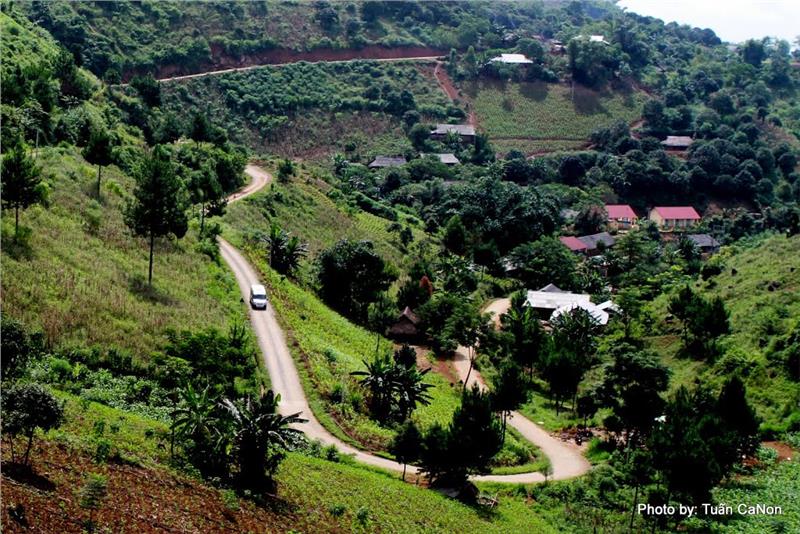
Yen Bai is a province in the northern midland and mountainous region of Vietnam. Yen Bai is located in the Northwest, adjacent to the Northeast. The province shares border with Tuyen Quang and Ha Giang in the northeast, Phu Tho in the southeast, Son La in the southwest, and 2 provinces of Lai Chau and Lao Cai in the northwest. Yen Bai terrain is steep, rising from Southeast to Northwest and formed by 3 large mountain ranges in Northwest - Southeast direction including Hoang Lien Son Mountain Range - Pu Luong lying between Red River and Da River, Con Voi Mountain (Elephant Mountain) between Red River and Chay riverand limestone mountain and limestone mountain between Chay River and Lo River. The relative complex terrain but can de divided into 2 major areas: the lowland and highland. The highland with the average altitude of 600m accounts for 67.56% the provincial area. This is the sparsely with the potential in land, forest products, mineral and ability to mobilize in socio-economic development. The lowland with the altitude of 600m, mainly low mountainous terrain, basin valley, accounts for 32.44% of the natural area. Yen Bai climate features the sub-tropical climate of the North Vietnam, the hot and humid summers and the dry and cold winters. The average temperature is 22 - 23°C, the average rainfall ranges from 1500 - 2200mm/ year; the average humidity is 83 - 87%, favorable for agriculture - forest development.
Yen Bai is the home to the ancient Vietnamese, with vibrant culture showed through the archaeological relics, artifacts in Hum cave (Luc Yen), stone tools in Tham Thoong (Van Chan), Dao Thinh bronze jars (Tran Yen), Minh Xuan bronze drum (Luc Yen). Established in 1900, Yen Bai was known for Yen Bai uprising of Vietnamese Kuomintang in February 1930. The leader was Nguyen Thai Hoc who was arrested and executed by guillotine in Yen Bai with 12 comrades on June 17, 1930. After 1945, Yen Bai province has 5 districts: Luc Yen, Than Uyen, Tran Yen, Van Ban and Van Chan. On April 29, 1955, 2 districts of Than Uyen and Van Chan were separated to establish the Region of Northern Vietnam. On April 7th, 1956, Yen Bai town was re-established. On July 1st, 1956, Yen Binh district of Tuyen Quang was moved to Yen Bai province. On December 16th, 1964, 2 districts of Bao Yen (separated from Luc Yen and Van Ban districts) and Van Yen (separeted from Tran yen and Van Ban districts). In December 27th, 1975, Yen Bai province was merged with Lao Cai and Nghia Lo into Hoang Lien Son province. On August 12t, 1991, Yen Bai province was re-established from Hoang Lien Son province. When separated, Yen Bai has 8 administrative units including, Luc Yen, Mu Cang Chai, Tram Tau, Tran Yen, Ban Ban, Van Chan and Yen Binh.
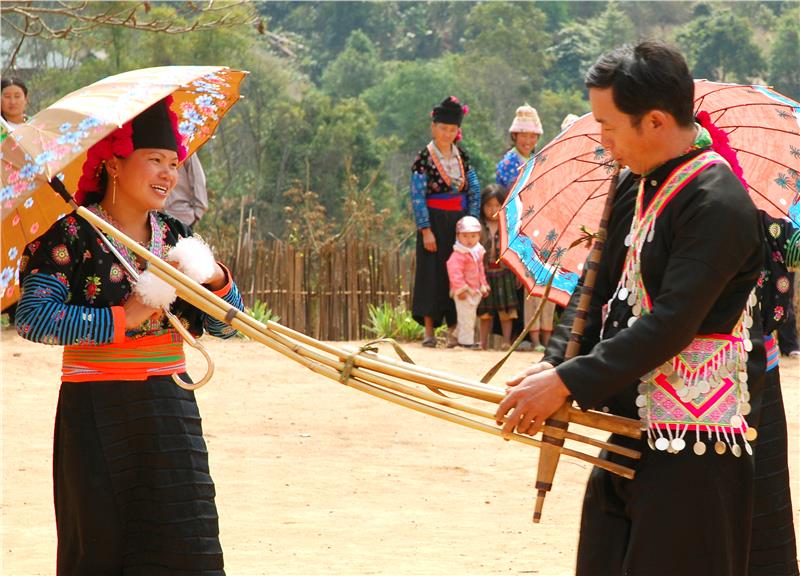
In 2013, the population of Yen Bai is 773,854 people. The population density is 112 people/ km2, concentrated in some areas of Yen Bai city, Nghia Lo town and districts. According to the survey data, Yen Bai has 30 ethnic groups, including 7 ethnic groups with more than 10,000 people, 2 ethnic groups with 2000 - 5000 people and 3 ethnic groups from 500-2000 people. The basin in Red River accounts for 41% the provincial population, in which Kinh ethnic people account for 43%, Tay ethnic people account for 33%, Dao ethnic people account for 10% and H'mong people account for 1.3%. The basin of Chay River accounts for 28% the population of Yen Bai in which Kinh ethnic people covers the majority of population. The percentages of other ethnic groups are relatively 11% of Tay people, 13% of Dao people and 17% of Nung people. Three western provinces (Tram Tau, Mu Cang Chai and Van Chan) account for 31% of the provincial population including 33% of Kinh ethnic people, 19.2% of Thai ethnic people, 11.8% of Tay ethnic people, 24.1% of H'mong ethnic people, 5.2% of Muong ethnic people and 5.1% of Dao ethnic people.
Yen Bai has 9 administrative units (Yen Bai City, Nghia Lo Town, Luc Yen District, Mu Cang Chai District, Tram Tau District, Tran Yen District, Van Chan District, Van Yen District and Yen Binh District) with 180 communes, wards and towns. Among them, 70 mountainous communes and 62 difficult communes have been invested following the national socio-economic development program. 2 mountainous districts of Tram Tau and Mu Cang Chai (80% of H'mong people) are one of 61 poor districts of the country.
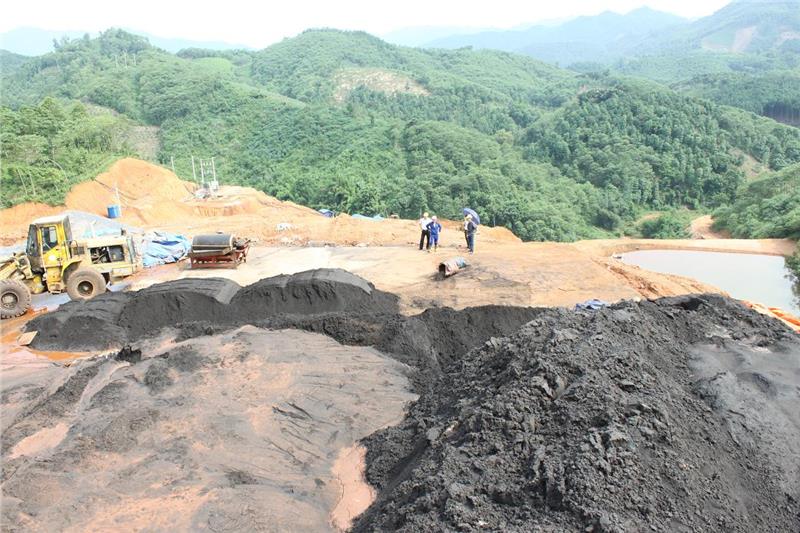
In 2014, Yen Bai economy grew stably and comprehensively; a number of areas achieved significant results; social welfare and environment were concerned; foreign affair is strengthened; social order and safety was guaranteed. The growth rate of gross domestic product of region was estimated at 11.07%, in which agriculture, forestry account for 5%, industry - constructions account for 12.3% and service accounts for 14.6%. The gross domestic product of region per capita reached 23.1 million dong, equal 100.43% of the plan. Total production of cereals was estimated at 285,920 tonnes, reaching 104.16% of the plan. The tea production reached 87,909 tonnes. Living weight of slaughtered cattle was estimated at 29,839.
The industrial production index increased by 7.1% compared to 2013. The industrial production value (at the constant price 2010) was estimated at 7062 billion dong. Total retail sales of consumer goods and service was estimated at 10,396 billion dong. The direct export turnover reached 52.6 million USD. The provincial revenue achieved 1320 billion dong. The total investment capital was estimated at 9,533 billion dong. Create new job for 18,174 labors. The rate of trained labors reached 42.8%. The percentage of poor household decreased by 4.3% compared to 2013. ODA and NGO capital was estimated at 502.71 billion dong in which ODA reached 432.71 billion dong, increasing 25.7% over the same period 2013, NGO was estimated at 70 billion dong, equal 51% of the plan and 89.7%compared to the same period 2013. Business activities in services of the province continue to grow and achieve higher growth meeting the increasing needs of population.
Programs and activities on culture, education, health, and sport in Yen Bai Province are maintained and promoted. Education and training: Continue to develop the comprehensive education create the significant change in the quality of education, especially in difficult social-economic area. In the school year 2013 – 2014, the province has 596 educational units, including 187 kid gardens, 169 primary schools, 187 junior secondary schools, 25 high schools and vocational schools. Health care is paid attention. The province currently has 2 general hospitals (Yen Bai General Hospital and Nghia Lo General Hospital); 4 specialty hospitals, 4 medical facilities, 1 Pharmaceutical JSC and one Yen Bai Medical College. The quality of health care is improved, equipment system and information technology are used efficiently. Create new jobs, poverty reduction and social welfare are concerned and reached good results.
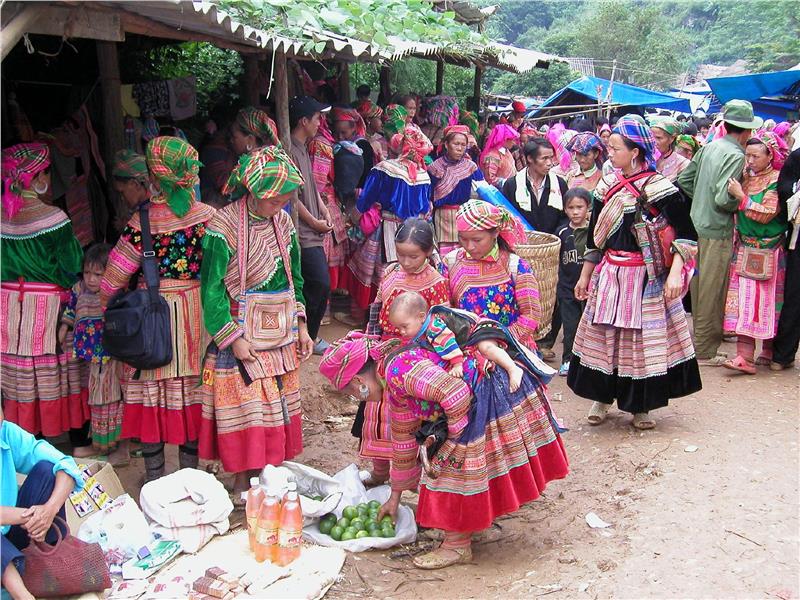
Located in the northwest gateway of the country, Yen Bai is a mountainous province with 30 ethnic groups living together. Each group brings a unique culture identity blended together to create a vibrant Yen Bai culture with many uniqueness, costums and habits. Muong people in Yen Bai live mainly in districts of Van Chan, Tran Yen and Van Yen. Muong ethnic people have the tradition of rice cultivation, so they often live in valleys, near the rice fields and along the streams. The cultural treasure of Muong people is very diverse and unique with traditional dances as Moi, Trong Tu, fairy dance, mua sap and mua ong. Particularly, Moi dance in Ao Luong II village, Son A commune, Van Chan district is considered the most typical dance for Muong ethnic people and is a scared dance because of the appearance of shaman. Thai ethnic people are very creative in house design. The stilt houses not only are the living space but also hold the mua sap to welcome the guests. This is a beautiful custom of Thai ethnic people in Northwest Vietnam expressing their hospitality. Moreover, other ethnic groups in Yen Bai also have distinct cultural identity and dances presenting for their pure souls. They are one of the most special features making people unforgettable experiences when visiting the city.
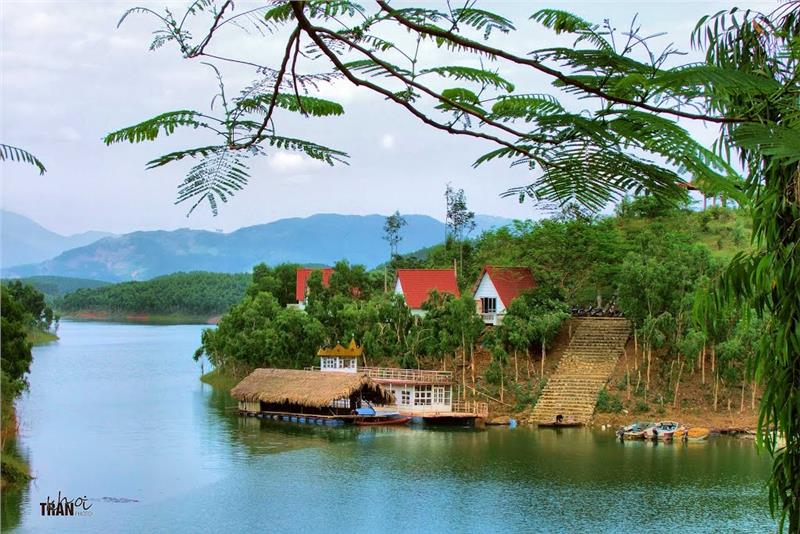
Yen Bai is the gateway of Northwest, the home to the ancient Vietnamese with more than 30 ethnic groups, the Red River Delta civilization and the midpoint of interaction between Northeast and Northwest of the country. It has the attractive tourism potential with historical relics, temples, pagodas associated with the history in building and defending the country. Yen Bai tourism is not as magical and sacred as the ancestral land. It is not as spectacular as Silver Waterfall – Sapa, but bears a wild beauty fascinating tourists with a cool climate and natural landscapes. Famous natural landscapes here are rice terraces, Mu Cang Chai Species / Habitat Conservation Area, Suoi Giang tourist area at an altitude of over 1400m above sea level with climate similar to Sapa, Dalat; the steep cliffs with 300-year-old tea trees, immense Thac Ba lake dubbed Halong on mountain with thousand islands and wild caves, etc. Thac Ba Lake is one of three largest artificial lakes and known as an attractive ecotourism spot. The lake is wide nearly 20.000ha with 1331 islands. Go sailing through the islands, tourists can enjoy the cool climate of nature, contemplate the vast green forests between the poetic islands creating a charming painting of a mountain and river area.
The journey takes tourists to beautiful caves as Xuan Long, Thac Ba, and Thac Ong, especially Thuy Tien cave associated with the mysterious legends of the love story between Trong Hai prince and Thuy Tien princess or the historical relics around the lace as Thac Ba, Sao pagoda, Cao Bien Linh Son mountain range... In addition to the charming beauty, Thac Ba is the home to 12 ethnic groups with diverse cultural colors of traditional festivals held in the New Year as Long Tong festival of Tay people, pray crop of Tay people, so on. Visiting here, tourists will also the chance to specialties of ethnic people with the fragrant flavor of com lam, banana flower salad, roasted pork, fish salad, etc.
From Yen Bai city, along National Route 32 about 80km to the west, tourists will come to Muong Lo valley, Nghia Lo town. Muong Lo is the second large paddy field in the Northwest, famous for the sentences “the first Thanh, the second Lo, the third Than and the forth Tac". Among 4 well-known valleys thanks to the beautiful landscape and fresh climate in the northwestern region, Muong Lo is ranked after Muong Thanh (Dien Bien) and before Muong Than (Than Uyen, Lai Chau) and Muong Tac (Phu Yen, Son La). Look from the above, Muong Lo paddy field looks like a large pan surrounded by mountain covered by clouds year round.
In addition to the specialties of the highlander as rau cai meo, chayote, tubers, fruits, cereals or straight Cunninghamia and po mu tree lines, the gravitational thing appealing tourists to Suoi Giang is the tea culture of Mong people. Coming here, tourists not only see the hundred-year-old tea trees but also taste the aromatic flavor hot cup of Shan Tuyet tea prepared by the hands of H'mong women and explore the simple and rustic lives of H'mong people under the mountain's foot. Suoi Giang- a hidden beauty is suitable for ecotourism, relaxing and learning about the local culture.
From Van Chan district, along the National Route 32 about 80km, tourists will arrive at Mu Cang Chai district that has spectacular rice terraces. To reach Mu Cang Chai, tourists have to pass through Khau Pha pass with 2100m high - one of 4 great passes in Vietnam. When setting foot in Mu Cang Chai, tourists will be surprised by spectacular rice terraces cultivated by the industrious hands and creativity of H'mong people. Coming to Mu Cang Chai in spring, look from the above, tourists will see here covered by the green color of new rice, of buds between the clouds and brilliant peach and plum flowers. The best time to visit the rice terraces is in September and October - the season of grain. Tourists will be extremely impressive with the image of "Golden Rice Bowl spreading endless.
Festival
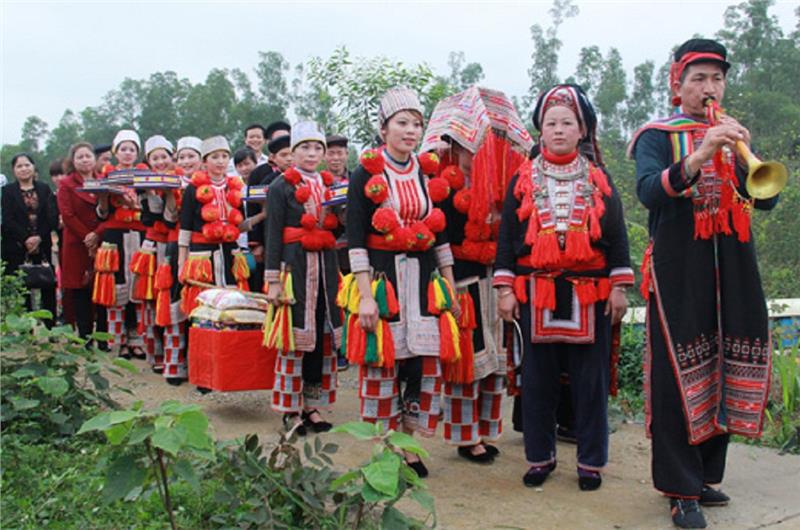
Visiting Yen Bai, tourists will have the opportunity to immerse into the unique spiritual cultural festivals and visit famous temples and pagodas as Ngoc Am Pagoda worshiping tam phu and Tran Saint, Tuan Quan Temple worshiping Holy Mother Lieu Hanh and Lam Son princess, Ba Chua Dang Temple, Nam Cuong pagoda. It is incomplete if tourists do not drop by Dong Cuong Temple, the temple famous for the sacredness in Van Yen district. The temple was built in a place with charming landscapes, harmonious mountain and river. It is so-called Ve Quoc Temple (Patriotic God Temple) because in addition to Mau Thuong Ngan, it also worships some local Generals who accredited in the war against Nguyen - Mongolia (the 13th century). Every year, in the 14th day of the first lunar month, tourists from everywhere come to Van Yen district to participate in Dong Cuong Temple Festival and folk games as swinging, nem con, tug of war...
Muong Lo cultural week: The Muong Lo Cultural Week held in the month of October in Nghia Lo town marks the anniversary of the liberation of Nghia Lo. Festivities lasting one week include sports competitions, Northwest Fair and a food and drink competition. The rite of maturity is an indispensable ritual of Red Dao people to recognize the maturiry of a man or woman. Along with many people in Yen Bai welcomes the New Year, Red Dao people in Phuc Loi commune, Luc Yen district hold the rite of maturity. This is also a ritual to pray for peace, luck, teaching Red Dao ethnic children the filial to their parents and grandparents, relatives. In addition, other festivals in Yen Bai also attracts tourists to participate in and learn about as Mau Thac Ba Temple festival, Doc communal house festival, Bung Lo festival (Dao Ho festival), Tang Cau festival of Blace Thai.
